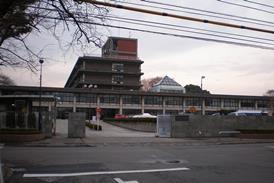Close menu
- Home
-
News
- Back to parent navigation item
- News
- Traction and rolling stock
- Passenger
- High speed
- Freight
- Infrastructure
- Policy
- Technology
- Ticketing
- Business
- Research, training and skills
- Accessibility and inclusion
- People
- Urban rail news
- Suburban and commuter rail
- Metro
- Light rail and tram
- Monorail and peoplemover
- Regions
- InnoTrans
- In depth
- Events
- Data
- Maps
- Tenders & Jobs
- Sponsored content
- Insights
Rail competition works, says European Commission report
2024-10-01T13:28:00

EUROPE: ‘Competition in railways seems to trigger an increase in ridership and brings about significant benefits to society’, according to the European Commission’s Directorate-General for Mobility & Transport.
Already have an account? LOG IN
To continue…
You’ve reached your limit of content for the month














